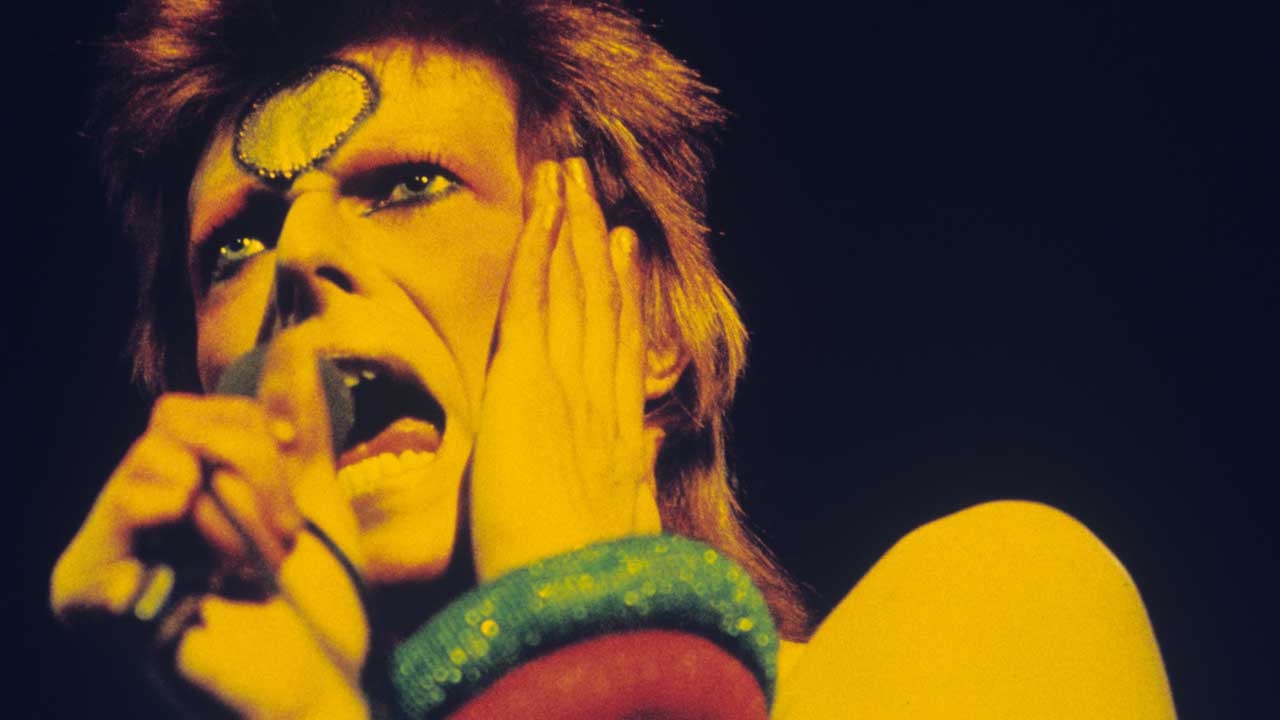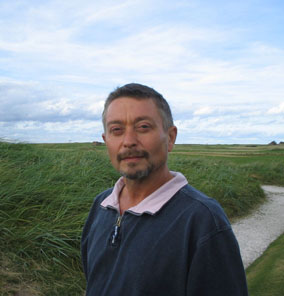On September 10 1972, David Bowie and wife Angie – “Britain’s most famous bisexual couple” – boarded the Queen Elizabeth 2 at Southampton, bound for New York.
It wasn’t Bowie’s first stateside visit. Three months earlier, Dave’n’Ange had tottered down Pennsylvania Avenue in their freak flame-haired finery to see Elvis Presley at Madison Square Garden. They sat next to fellow VIPs John Lennon, Led Zeppelin, Simon & Garfunkel and Bob Dylan.
“Elvis was a major hero of mine,” Bowie said later. “And I was probably stupid enough to believe that having the same birthday as him actually meant something. I came over for a long weekend. I was in the middle of a Ziggy Stardust tour and I flew over on a Friday to see Elvis on the Saturday night. I remember coming straight from the airport and walking into Madison Square Garden very late.
"I was wearing all my clobber from the Ziggy period and had great seats near the front, about 10 rows in. The whole place just turned to look at me and I felt like a right idiot. I had brilliant red hair, some huge padded space suit and those red boots with big black soles – the full kit. I wished I’d gone for something quiet, because I must have registered with him.
"Elvis was well into his set. I had to walk down through these really quite conservative Americans… and I thought it was the worst, most humiliating feeling ever. I flew back again on Sunday for the Monday night gig at Bristol. For about two weeks I was Presley [laughs]. It was a fantastic experience.”
And before that, in January 1971, Bowie had jetted to New York and witnessed the American touchstones that underpinned his love for the bizarre and the decadent: the Velvet Underground at Max’s Kansas City, and a rowdy club date by The Stooges. He would soon introduce both Lou Reed and Iggy Pop to his British audience, working on their groundbreaking albums Transformer and Raw Power. On that debut visit, the wild-eyed boy from south London was all over his new-found promised land. “I think I’ve been in prison for the past 24 years. Coming to America has opened [a] door.”
If that initial trip kick-started the burst of creativity that became The Rise And Fall Of Ziggy Stardust And The Spiders From Mars album, the 1972 adventure proved even more fruitful. Bowie wrote the songs for his next venture, Aladdin Sane, on the bus, in limousines, trains and hotel rooms. Though not as conceptually overt as Ziggy, Aladdin Sane was his most ambitious lyrical work to date: a cooler, more loveless affair than its summery, blustery predecessor.
Describing worlds falling apart, the end of Western civilisation, Bowie fixed Aladdin Sane at the epicentre. He was the stranger in a strange, dystopian land populated by sexually predatory celebrities, terrorists and snipers, coke dealers, ferocious groupies, Andy Warhol starlets, smacked-out rock-star casualties – and he was loving every cocaine-tooting minute. The Top Rank Suite, Stoke-on-Trent, the last British date before his departure, this was not.
With latest hit John, I’m Only Dancing, that song for swinging lovers with bisexual tastes, creaming the UK charts, Bowie and the boys were on their A game. After their debut gig, wowing the Music Hall, Cleveland, Bowie and Ronson concocted a follow-up, The Jean Genie, nicking The Yardbirds’ version of Muddy Waters’ I’m A Man and turning it into an erotic coke-and-fuck fest in keeping with the jubilant mood of the tour. Roadie Will Palin recalled the song’s birth as an on-the-road chant, jammed up by Ronno and Bowie’s pal George Underwood, Ronno’s riff accompanied by shouts of “Bus, bus, bus, bus, bus, bus, we’re bussin’.”
Trevor Bolder reveals: “We regarded it as a rip-off of I’m A Man, which I’d played in bands when I was young. We played it on the bus. [When we recorded it] it was knocked out in an hour on the second or third take.”
Bowie had the lyrical idea within hours of stepping off the QE2. He and Angie went to the Mercer Arts Center to see the New York Dolls – or the Dolls Of NY as they currently called themselves – in the midst of a 17-week residency in the venue’s Oscar Wilde Room.
According to Dolls guitarist Sylvain Sylvain, the Bowies enjoyed a five-day orgy at the Plaza Hotel with Billy ‘Doll’ Murcia and 21-year-old Marilyn Monroe lookalike Cyrinda Foxe. The foursome were at it hammer and tongs while room service champagne bottles and cocaine phials littered the floor. “David Bowie was now infatuated with Cyrinda and Angie had a new lover – Billy Doll!” said Sylvain.
Basing his Jean Genie tale on a fictional variation of new pal Iggy Pop, who’d also snuck into the tryst at the Plaza suite, Bowie wrote the song to amuse Cyrinda in between bouts of ‘Snow White’ ingestion. Aladdin Sane was in the building. The pharmaceuticals were good. Watch that man.
But New York’s a go-go where everything tastes nice, and a prestigious concert at Carnegie Hall was attended by Andy Warhol, Lou Reed, the Dolls, Todd Rundgren and Anthony ‘Psycho’ Perkins. Andy Warhol sat poker-faced when the Hunky Dory song bearing his name was introduced. By contrast, Lou Reed died and went to heaven as the Spiders crawled over his 60s epics White Light/White Heat and Waiting For The Man.
At the aftershow, arch bitch Wayne County – who could eat you with a fork and spoon – shimmied on the dance floor in his stilettos with Warhol’s gal Cherry Vanilla. Angie and Cyrinda waltzed and groped and tongued each other. The men from RCA ogled and wished they hadn’t brought their wives. The champagne bubbles got up your nose, and they weren’t all that did. The next day, Bowie sat in his suite and regurgitated the night. Watch That Man was born.
The tour in full swing, manager Tony Defries reminded Bowie he wasn’t in America to have fun. RCA were pressing for the next album. Known as Deep Freeze behind his back, Defries saw himself as an English gent with a cut-glass accent. He was a ruthless motherfucker.
“I never liked Defries,” the late Trevor Bolder told Classic Rock in 2013. “Never. Ever. I didn’t trust him. Obviously Bowie did, though later on he discovered he shouldn’t have. He always wore a fur coat and had a huge cigar. He was a consultant lawyer who’d worked with Allen Klein.”
In early October, the band returned to New York and booked RCA Studios on Avenue of the Americas to cut The Jean Genie with Bowie and Mick Ronson producing, rather than Ken Scott, the regular console master. Scott wasn’t unduly bothered. “It’s designed to be a big hit. It’s cute, but it’s not one of my favourites.”
It was debuted live in Chicago the next day. Bowie described the song as a “lightweight riff thing written for Cyrinda’s enjoyment, an otherwise wordless pumper; ultimately it turned into a smorgasbord of imagined America… based on an Iggy-type persona. The title, of course, was a clumsy pun upon Jean Genet.”
That pseudo-intellectual reference added nothing to the song which soon became – like Ms Foxe – Bowie’s new favourite thing.
On November 21, the song was possibly remixed at RCA Studio B in Nashville in mono. Scott maintains that carbon dating this era is notoriously problematic, but that mix was earmarked as the single.
Three days later it was, later rising to No.2 in the UK, beaten off the top spot by Little Jimmy Osmond’s vile Long Haired Lover From Liverpool, then The Sweet’s glam-stomp siren Blockbuster, which bore a remarkable similarity to The Jean Genie. Blockbuster’s co-writer Nicky Chinn met Bowie soon afterwards. “He looked at me completely deadpan and said, ‘Cunt!’” remembered Chinn. “Then it was all hugs and kisses.”
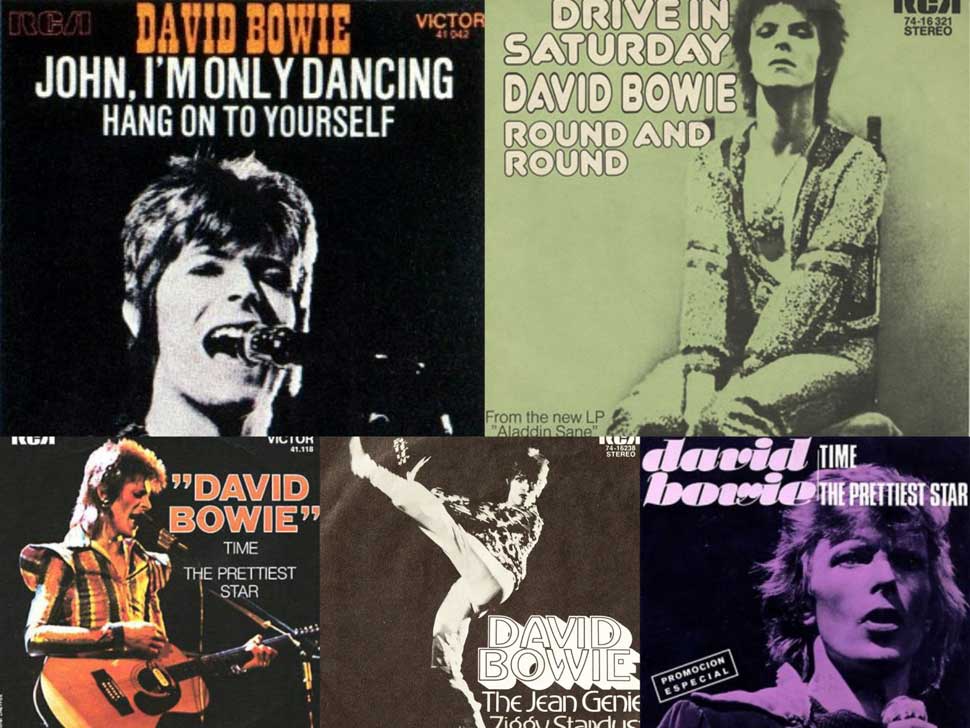
Suzi Fussey (later Suzi Ronson) was Bowie’s hairdresser, make-up artist and personal wardrobe assistant during the entire period as Ziggy/Aladdin Sane. ‘DB’ also changed her life.
“I was working in a salon in Beckenham,” she says. “I was going to marry the banker round the corner but I wanted to go on the road. Boy, did I go on the road! Before Bowie and the Spiders, I’d never met anyone black, or gay, let alone someone with a Yorkshire accent like the boys from Hull.
"The first time I saw two guys kissing, I was shocked! On tour David would try and find the most hardcore leather and jockstrap clubs in town and force the Spiders to accompany him. Mick, Trevor and Woody sat with their backs to the wall, trembling, hands over eyes, mumbling, ‘Oh fuckin’ ’ell!’ Bowie took everyone to those places but he was never as gay as he said he was. He did like to wind people up.
“There were a lot of girls on tour. One of my jobs was to pull the girls at the concerts for the band, load them on the bus and bring them back to the hotel. The technique was the boys would say, ‘See her? Try and get her.’ And I’d stand on stage and throw a towel at the chosen ones and we’d see who’d grab it. They knew what it meant. Sometimes I’d get it wrong and we’d end up with a big beefy one but they still didn’t complain. Much.
“It was a tough job,” Suzi laughs. “Very complicated because of age. There were 16-year-olds desperate to get into the dressing room but you had to be careful with local laws. It was very touch and go. I was the procurer to all the boys and if you’re in Kansas, take care or all hell breaks loose.”
When things got too hectic, Suzi was the band’s link to the outside world: “I’d be off buying lamé tights and feather boas and I looked after the clothes. Two shows a night, all that sweat, the material was disintegrating.”
As the tour rolled across America, Bowie was hard at work writing at the back of the bus with Ronson close by, both men clutching guitars in case the muse struck. Fussey remembers: “Angie wasn’t around much on the first tour. Dave was working and she was so loud. She could talk you to death. The rest of us were like a big gang running around America, and it hadn’t gotten too intense. That changed later.”
The band played strait-laced Salt Lake City, of passing interest to Ronno since he’d been brought up as a Mormon, but decadence returned with a bang when the 46-strong entourage hit Los Angeles and stayed in the Beverley Hills Hotel, running up a $100,000 tab. In LA Bowie started writing Cracked Actor after taking a stroll down Hollywood Boulevard.
Borrowing a cue from the Velvet Underground’s Loaded epic New Age, written about Shelley Winters (‘Can I have your autograph/He said to the fat blonde actress’), Bowie’s song depicted a 50-year-old has-been homosexual entering into an S&M tryst with a ‘trick’ he’s picked up on Sunset and Vine. The most debauched lyric he’d written, Cracked Actor is often interpreted as an old lecher taking advantage of a young lad: it’s actually the other way around.
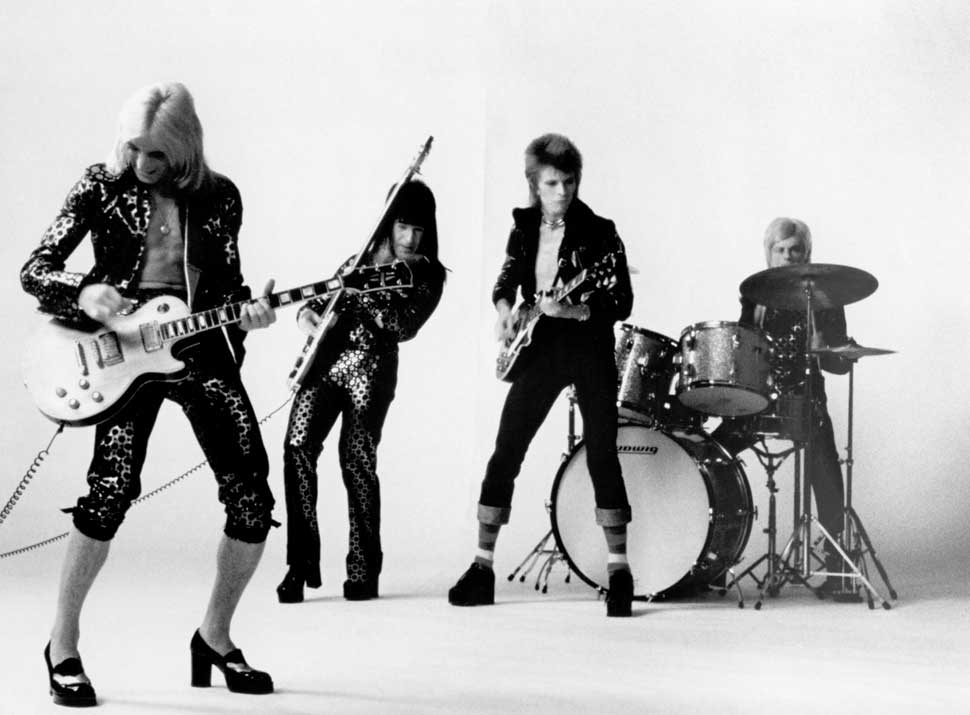
In California, the band played Santa Monica Civic – captured as a quality bootleg thanks to FM radio (and officially released in 2008). Bowie hooked up with Iggy Pop and started writing another song in his honour, Panic In Detroit, while the Ig regaled him with lurid gossip concerning The Stooges, anarcho rockers MC5 and partner in crime John Sinclair of the White Panthers, who now became the National People’s Gang.
Bowie tucked in an allusion to an old friend he’d bumped into in Detroit who left him a cryptic note: ‘Let me collect dust.’ Bowie recalled, “I know why I associated with that character. It was somebody I used to go to school with who ended up as a very big drugs dealer down in South America and who flew to see one of the shows and reintroduced himself. And I said, ‘I don’t believe it. Is that what you are now?‘”
High as kites, Bowie and Iggy remixed the latter’s Raw Power at Western Sound Recorders in one day. Bowie remembers: “Out of 24 tracks there were just three tracks used. I said, ‘Jim, there’s nothing to mix…’”
In San Francisco, the promo for The Jean Genie was shot with trusted English photographer Mick Rock – it starred Bowie and Cyrinda Foxe cavorting at the Mars Hotel, a Fourth Street flophouse associated with the Grateful Dead. Grace Slick’s ex-husband Jerry Slick was the cameraman.
The band caught a train to Seattle and then Phoenix. During that journey, Bowie wrote Drive-In Saturday, a futuristic post-apocalyptic sci-fi twist on American 50s rock’n’roll that namechecks Carl Jung, NY Doll Sylvain Sylvain (Bowie misspelled his name and used it as a brand name for a pre-Viagra pick-me-up: ‘He’s crashing out with Sylvian/The Bureau Supply for ageing men’), the model Twiggy (‘Twig the Wonder Kid’), Mick Jagger and was remarkably prescient in predicting a time when video pornography would be mainstream.
At a gig in Cleveland, Bowie sat on a stool and played Drive-In acoustic, explaining: “It’s about a future where people have forgotten how to make love, so they go back to video films that they’ve kept from this century. This is after a catastrophe of some kind, and some people are living on the streets and some people are living in domes, and they borrow from one another and try to learn how to pick up the pieces.”
Ken Scott was summoned to America in December. “When the tour ended, the band returned to New York and we cut Bowie’s version of All The Young Dudes, Drive-In Saturday and The Prettiest Star,” he says.
The latter tune was a remake of the 1970 single, written for and about Angie, featuring Marc Bolan’s guitar, which sold 800 copies. “We attempted a couple of others that were never completed but didn’t get too far. God knows why he did All The Young Dudes – it wasn’t likely to make the album, but that was typical of Bowie.
He had his reasons. He’d done It Ain’t Easy for Hunky Dory, but then changed his mind and saved it for Ziggy... It was all part of his mystique, which could be very secretive. There were two versions of John, I’m Only Dancing, for example. One he did with me at Trident and then, apparently, in the evening he took the band to Olympic Studios and mimicked the entire session. Don’t ask me why.”
Scott noticed: “Bowie’s confidence level had exploded. All our ears and ideas had changed, and we were looking for different things. The drum sound was much more live than it had been before. With David’s arrangements, he threw a lot more in than he did in Ziggy. Then there was the addition of Mike Garson. There’d been acoustic piano before, which Ronno or Bowie had done, but they’re not the greatest keyboard players in the world, so Mike made a big difference. On Ziggy… it was all very sparse – there had been two bits of synth – that was it. On Aladdin Sane there were a lot more keyboards, Mellotrons, a Moog synthesiser, as well as acoustic piano.”
At the time, Scott said: “Some Aladdin Sane tracks were recorded in New York but mostly in Trident. As for RCA’s New York Studios, he just suddenly got the urge to record. He had some idea of getting an American sound.”
Forty years later, he adds: “He liked to keep everyone on the edge. When we recorded Drive-In, Ronno knew the song but Trevor and Woody certainly didn’t have a clue. He preferred to treat the rhythm section that way and he didn’t like being in the studio for too long. He got very bored very easily. Everyone was fearful of his saying, ‘Look, we’ve had three runs at it and we haven’t nailed it so we’ll have to move on’.”
Having been what Bowie once called “my George Martin”, Scott (who started working with The Beatles in 1964 as a 16-year-old ‘button pusher’ on side two of A Hard Day’s Night) was in a good position to assess the singer’s mood. “There was a lot of pressure because record companies back then demanded an album every six months, and so Aladdin Sane had to be recorded and mixed in about three weeks. He was always totally professional at work.
"When I first worked with him I never thought he’d become a superstar and so leading up to Hunky Dory, my first ever production, I felt quite comfortable because I thought I could make any number of mistakes and no one would ever hear them. Then, while sorting out which songs we should record for the album, I realised, ‘Fuck – he really is talented after all’.”
On the back of the success of Ziggy…, three of Bowie’s previous albums were also shooting up the British charts. In 12 months he sold over a million LPs and even more singles. America was, Scott says, an unknown quantity. “It was going to be a hard sell. There were no guarantees with Aladdin Sane. It could easily flop. A lot of people hated him pushing the bisexual androgyny thing. They were scared of that image in America.”
Dave and Angie returned to London on December 10 on the Royal Hellenic Mail Ship Ellinis, where he wrote the title track Aladdin Sane (1913 – 1938 – 197?). Album copies would bear the name (R.H.M.S. ‘Ellinis) beneath the title. Inspired by his on-deck reading of Evelyn Waugh’s Vile Bodies novel, where people Bowie’s age indulged in reckless hedonism while civilisations collapsed on the brink of war (‘Battle cries and champagne’), the singer looked at himself.
“People like Lou Reed and I are probably predicting the end of an era,” he mused. “Any society that allows people like me to become rampant is pretty well lost. If we’re the spearhead of anything, we’re not necessarily the spearhead of anything good.”
On return, Bowie offered Mott The Hoople first crack at Drive-In Saturday but the band were bamboozled by what he called “all these weird time changes”. Unconvinced, Overend Watts suggested Bowie keep it for himself. Since he reckoned he’d rescued Mott with All The Young Dudes, Bowie was miffed.
He’d later claim he shaved his eyebrows off as a result. That seems unlikely since Suzi Fussey recalls, “Angie had already done that so he was copying her. He shaved them in Phoenix and we’d painted the gold circle on his forehead. I remember he rushed off stage screaming, ‘Oh my eyes! My eyes!’ because having no brows meant all the glitter and sweaty make-up cascaded down and blinded him.”
There may have been another reason why Mott The Hoople turned down the song. Where Bowie had sat cross-legged in Mott’s management office and somewhat nervously played them …Dudes, this time, Ian Hunter says, “He came with an entourage and he’d gone a bit weird. His clothes were more flamboyant and he was starting to live his image to the hilt.”
Before Christmas, Bowie and the Spiders played two nights at the Rainbow Theatre and unveiled pianist Mike Garson. God, it was different. Garson’s arrival had enormous repercussions for the sound of Aladdin Sane and the eventual break-up of the band. Brooklyn-born Garson came to Ronson’s attention first when the guitarist heard him play on Annette Peacock’s 1972 RCA album I’m The One, an experimental masterpiece featuring the cream of the new-wave New York avant-garde.
Bowie’s interest piqued, he and Ronno decided the Spiders needed gingering up. Garson was called to audition in New York. “I played Mick eight bars of Changes and he said, ‘You’ve got the gig.’ I was hired for eight weeks but stayed three years. That was thanks to Ronson because he told me, ‘It’s all very well being a paid session man but to last with David you need to make yourself indispensable.’”
Garson heeded the advice. “Bowie and I got on great because he loved my fractured, conservatory jazz piano and he liked the fact I was searching for creativity. It wasn’t easy from the outset because the rhythm section were so tight-knit. They were decked out in wild clothes, gold and silver, blond hair – all looked kinda gay to me. But I was a starving jazzer and since I don’t like playing in a comfort zone, I laughed it off and got on with my work.”
Significantly, Bowie was also immersed in Van der Graaf Generator’s ultra-progressive Trident-produced albums – H To He, Who Am The Only One and Pawn Hearts – both stuffed with saxes and synths.
The Rainbow homecoming shows were mayhem. Bowiemania was now a reality. Mick Rock, snapping from the pit, witnessed “two girls I called the agony and the ecstasy: one was in ruins and the other was having an orgasm”. It was an eye-opener for Garson. “Suddenly I’m playing with these guys and it’s like Beatlemania! And their scene was definitely sex and drugs and rock’n’roll. It was a freak show. I didn’t care. Jazzers on heroin or rockers on coke – nothing to do with me.
"I stayed on my game. I didn’t want to end up in rehab. I know there was antipathy towards me from Trevor and Woody because I changed Bowie’s paradigm. I found him open-minded and generous, others may not have. Y’know, some people would rather be right than happy.”
In the New Year of 1973, the band returned to Trident’s basement to finish Aladdin Sane. Scott says: “Everything was fine with Garson in the band. His playing on the title track is magnificent and he pushed the others on. Bowie brought him into the fold and told him to play his Cecil Taylor avant-garde stuff and he let rip on the Trident’s famous handmade Bechstein – the same instrument heard on Hey Jude and Life On Mars?, which Rick Wakeman still insists is one of his greatest works.”
As the sessions took shape, Bowie was convinced he’d discovered his Grail. “Suddenly my songs didn’t seem so out of place. All the situations that we were going through were duly noted down and all the remarks I had heard, real Americanisms that caught my ear. Just the look of certain places like Detroit really caught my imagination because it was such a rough city and it almost looked like the kind of place that I was writing about. I thought, ‘Christ, these places really exist and people live in them! I wonder if Stanley Kubrick has seen this town? It makes his kind of world in Clockwork Orange look kind of pansy!’.”
Utilising the studio’s 16-track console, Scott added his magic: “For Cracked Actor I put Bowie’s harmonica through Ronno’s Marshall amp because it sounded tiny before. Now it was very nasty and very lovely,” the producer recalls.
Scott also insisted on keeping a deeply buried vocal mix on Watch That Man, despite RCA’s disappointment with the results – probably because Bowie sounds like he’s in a different room to the others. Maybe that was the point. “I probably went overboard but it seemed right at the time. That was the only problem we ever had with a Bowie mix.”
Watch That Man was a perfect opener. It told the story of a wild party thrown by Shakey (a sarcastic reference to an RCA executive) and all-night debauches with the Dolls in New York, high on cocaine and lust. The girl backing vocals, expertly provided by Linda Lewis and Juanita ‘Honey’ Franklin, added to the druggy claustrophobia.
The perfect closer to this American sojourn was Lady Grinning Soul, theme song for an imaginary James Bond movie, supposedly written in honour of Bowie’s latest girl at arm, Claudia Lennear – also the subject of the Stones’ Brown Sugar. (Or Black Pussy, as Jagger originally called his song.) Bowie was more obsessed with this composition than anything else and oversaw the mixing, making sure Scott phased his vocals properly.
For Garson, “Lady Grinning Soul brought out the romantic playing in me that comes from composers like Franz Liszt and Chopin. I mixed this with elements of Liberace and Roger Williams, styles of music that were always put down because they were so mainstream. I played in a very undissonant way here, whereas Aladdin Sane is about as dissonant as you can get.”
Garson was also integral to Time, a Brechtian discourse on death, part-written in New Orleans, with nods to the Master of Ceremonies character played by Joel Grey in recently released Bob Fosse movie Cabaret. Bowie’s lyric depicted a Grim Reaper who ‘flexes like a whore/Falls wanking to the floor.’
Increasingly partial to cocaine, Bowie was starting to study his own mortality. He’d turned 26 in the studio and found himself staring at a list of rock casualties, the latest of whom was Billy ‘Doll’ Murcia, immortalised here: ‘Time – in Quaaludes and red wine/Demanding Billy Dolls and other friends of mine’.
Dave and Angie’s NY Doll friend died from a heroin and barbiturate OD in London the previous November, a few days after the Dolls supported The Faces at Wembley Empire Pool. Murcia passed out at a party where attempts by other junkies to revive him with black coffee only led to his asphyxiation. He was 21.
Time was another musical triumph. Guitarist Ronson quoted a section from Beethoven’s Ninth – the band’s pre-show music – while Bowie’s mate Geoff MacCormack mimicked him perfectly on the choral fades. Mike Garson: “Time is my second favourite performance. It’s got a kinda New Orleans jazz stride – a little left-field, with an angle. Bowie pulled me out as a producer.
"On my favourite song, Aladdin Sane, I played him my most obsessed blues and he said, ‘Nah. Don’t want that’. I played him my finest Latin. ‘Nah, I already know you can do that. Play one of those weirdo things’. I trusted his intuition because any of my other attempts would have done most people.”
On January 17, Bowie appeared on TV’s Russell Harty Plus and debuted his crash course for the ravers, Drive-In Saturday. It would be the album’s next single. Chatting to Harty, Bowie appeared to be somewhat under the influence although Scott insists, “In the studio he was always cool. People don’t believe me but on the albums I worked on, I never saw any sign of drugs at all. Everyone was straight – maybe a couple of beers for Ronno. Oh, and nicotine. Lots of nicotine.”
Bolder says, “I never saw Bowie take drugs.” Most likely, the singer was discreet. What was cool with pals like Iggy wasn’t done in front of more impressionable folk. Not long afterwards, Bowie admitted, “I like fast drugs. I don’t like drugs that slow me down.”
Last in the can were the remodelled The Prettiest Star, the stereo-remixed The Jean Genie and a cover of the Rolling Stones’ Let’s Spend The Night Together. Bowie’s take on his heroes’ 67 proto-hippy free love single – a precursor to the Pin-Ups project – loitered with menace.
Again, Garson and the Spiders stepped up to the mark with fractured solos and vicious rhythms that punched out the singer’s carnal interpretation. This wasn’t a love song, this was a fuck song. Most likely Bowie wanted to throw down a marker to Jagger’s boys: “I’ve got your women, I’m taking your audience – next I want your Greatest Rock’n’Roll Band In The World crown.”
Bowie’s Midas touch remained intact elsewhere. Lou Reed’s Transformer album, produced by David and Ronno, had just gone Top 10. Its single, Walk On The Wild Side, was also flying in America when the second leg of the US tour began with a brace of shows at New York’s Radio City Music Hall on February 14.
This gig could be tagged the St. Valentine’s Day Massacre. Learning on the flight over that Mike Garson was being paid $1,000 a week while they were on £30, Bolder and Woodmansey confronted Defries. “We said, ‘What’s going on here?’” recounts the bass player. “We demanded a rise, or we were going home on the next plane.”
Ronson intervened and the tour went ahead but Bowie blew his top. According to Angie Bowie: “David was furious, just furious. ‘They can’t hold me up like that’, he told me. ‘I don’t care who they are, I simply won’t have that kind of disloyalty’. From then on, his passive-aggressive machinery engaged gears and the lads’ days were numbered.”
Bolder and Woodmansey sulked while Defries blanked them. “All we wanted was a fair deal,” says the bass player. “CBS offered the Spiders a huge deal and Defries crushed it. He took Ronson aside and said, ‘You go solo and we’ll get rid of these two’. Ronson was played along. He got the ‘I’m going to make you a star, just like I did David Bowie’ treatment.”
The old camaraderie jeopardised, Bowie’s entourage stayed at The Plaza in New York. “Not us,” says Bolder. “Me, Woody and Ronno were staying in a cheap hotel and going down the Village to get drunk. David became more separate and distant. We weren’t arty enough for him and the Andy Warhol and Mick Jagger crowd any more.”
Defries flogged them on, insisting his star travelled first class and stayed in the best hotels – all paid for from RCA’s advances. Debts mounting, Defries’ solution was to book a third US tour. Facing bankruptcy, that was promptly cancelled.
Trevor Bolder says: “We had to crack America because Defries had borrowed so much money, but it meant the Aladdin Sane tour wasn’t pleasant. Fair enough, David couldn’t be Ziggy forever but he had this expensive lifestyle while me and Woody could barely exist. The royalties weren’t arriving; they never arrived. We got nothing in the end and either David didn’t know what was going on or he ignored it. In the end, Defries did the same thing to him. People will rob you in this business.”
Moving on to Japan, in Tokyo Trevor and Woody were told by Defries that RCA had agreed to up their wages to £500 a week. He added: “I don’t think you’re worth a penny of it. In fact, I’d rather give it to the road crew because they’re worth more than you.” Woodmansey got up and told Defries, “In that case you can stuff this tour, and everything else.” Again, Ronno’s intervention saved the day.
The second US tour over, Bowie took stock: “I was surrounded by people who indulged my ego, who treated me as Ziggy Stardust.” After a side trip to Moscow and Paris, Bowie arrived home at Charing Cross Station where thousands of fans lay in wait. His life had completely changed.
Continuing to live in the old Haddon Hall community with the Spiders was impossible – girls were breaking in through the basement – so he moved out of Beckenham in May and rented Diana Rigg’s flat in Maida Vale. Of course, he went back on the road, but his mental state was beginning to mirror the title of his new record. Driving from concert to hotel in a chauffeured Daimler, he’d started drinking heavily and consuming cocaine by the phial. Those around him muttered about a nervous breakdown, or worse. The opening night at Earls Court was disastrous. Fights broke out and Bowie’s plea of “don’t be so silly” sounded feeble.
It wasn’t all gloom. In Glasgow’s Green’s Playhouse, he was delighted to discover a section of the audience ripping out the seats. “Can you imagine the physical effort that takes? It sounds like the 50s to me. And we had four couples fucking in the back row. That was fabulous – first time I’ve heard of that happening.”
In June, Defries summoned a meeting and showed Bowie the books, a mass of red. RCA’s underwriters were owed thousands. The manager suggested David should announce his retirement. It would be great publicity and the old adage ‘leave them wanting more’ would only up his profile.
Bowie wasn’t sure but on July 3 at the Hammersmith Odeon, he bit the bullet and made his onstage announcement. “Everybody… this has been one of the greatest tours of our lives… Of all the shows on this tour, this particular show will remain with us the longest… [mass cheering]… because not only is it the last show of the tour, but it’s the last show we’ll ever do. Thank you.”
Those who heard the speech were devastated but as a career move, it was a brilliant coup. Defries was right. David to him was “a real star … Not a Rod Stewart style, if you like, or a Cat Stevens, but… a Marlon Brando or a James Dean-type star. I see him more in that category of large-scale untouchable. It’s like he doesn’t quite belong here.”
And Bowie was certain he’d taken the Ziggy/Aladdin persona to the limit. Trouble was, he hadn’t told Woody and Trevor, though Ronson was in on the secret. Woody’s initial reaction was “because of his character, there were always things of that nature thrown around. We weren’t sure that it wasn’t just a publicity stunt.”
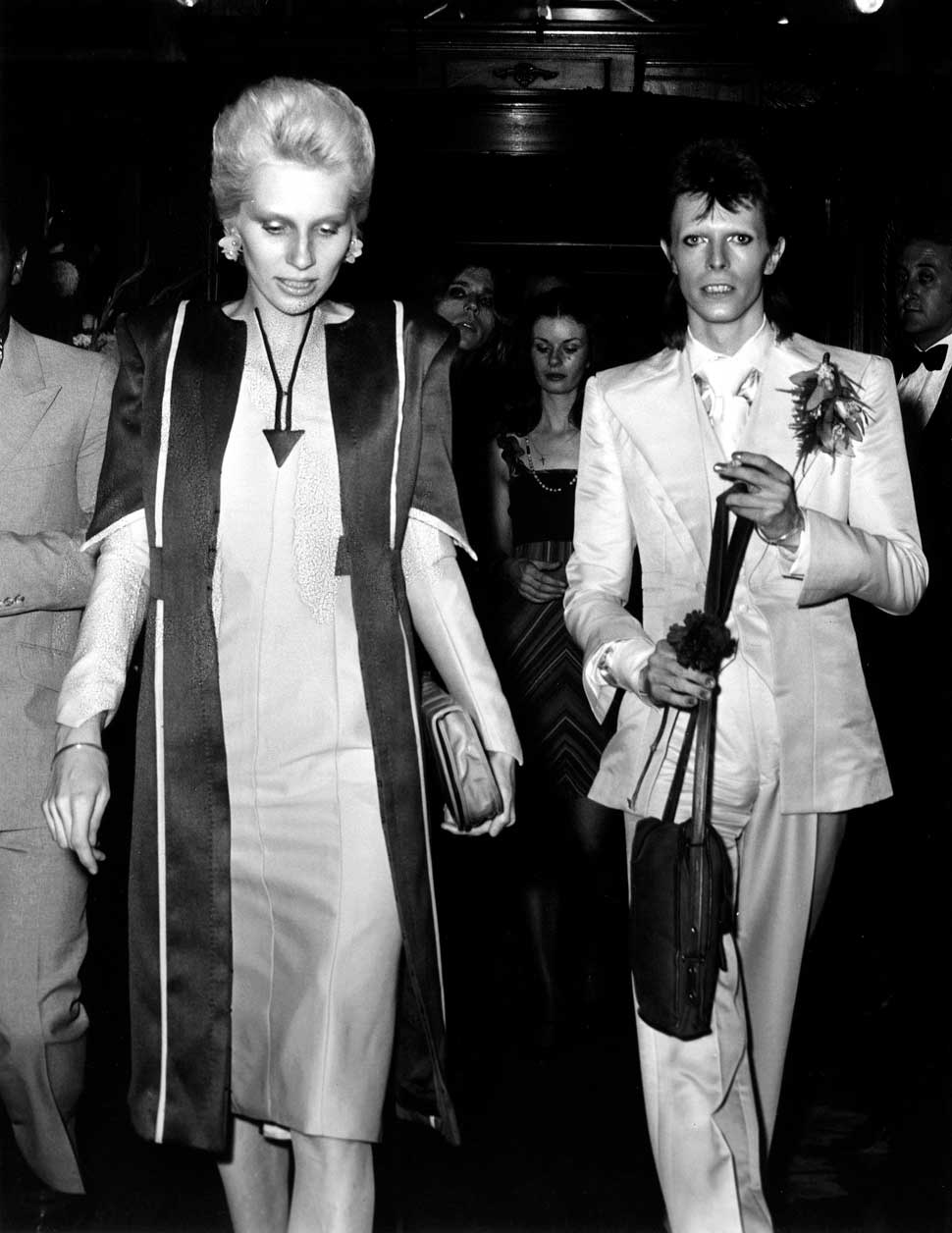
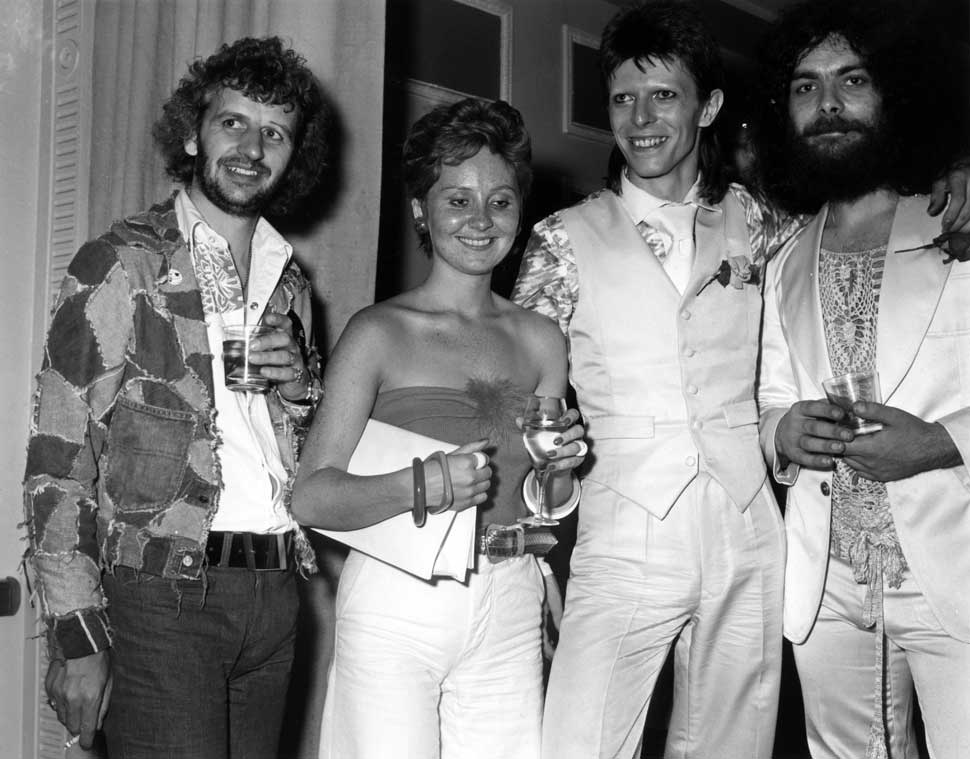
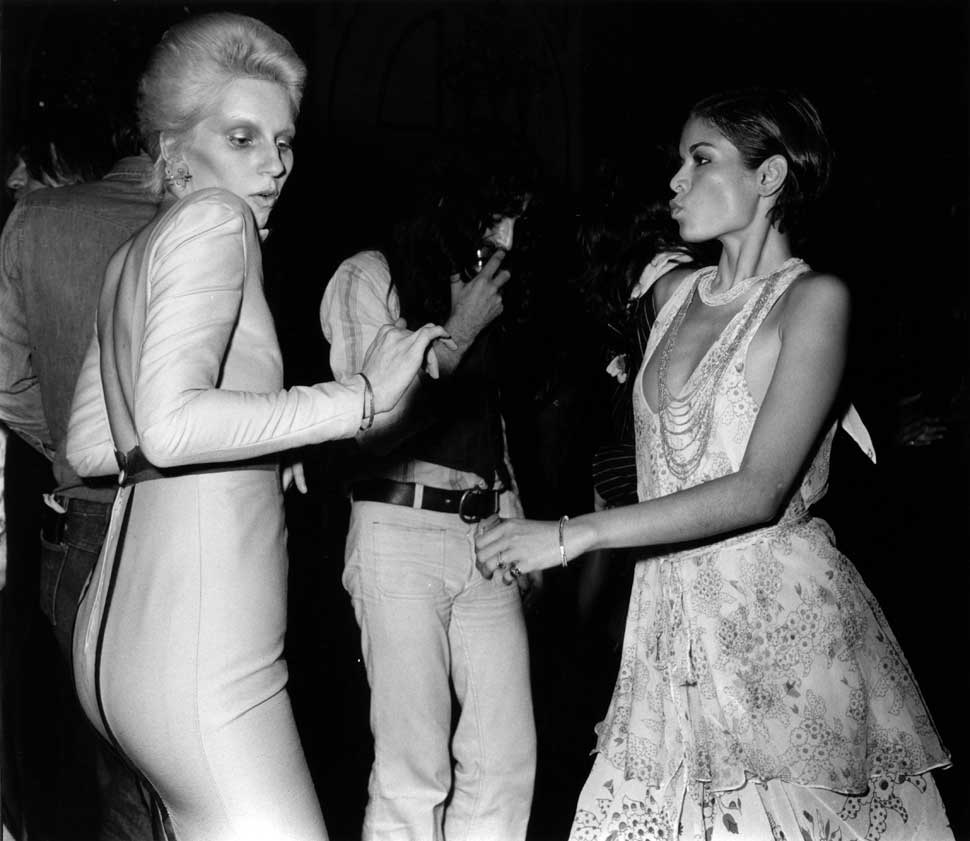
The truth dawned not at the aftershow party at the Inn On The Park but at an exclusive gathering on July 4 at Café Royal, where Bowie held court with Mick and Bianca Jagger, Lou Reed, Rod Stewart, Jeff Beck, Keith Moon, Cat Stevens, Lulu, Barbra Streisand, Sonny Bono, Tony Curtis, Ryan O’Neal, Elliot Gould, DA Pennebaker and Paul and Linda McCartney. Peter Cook and Dudley Moore provided ribald cabaret. Dr John played the piano.
It was quite a night, unless you were a drummer or bassist. Bolder says: “Bowie and his mates were sitting at a table having a jolly good time, and me and Woody were ignored like we weren’t even in the band.”
Even Angie Bowie was surprised by her husband’s callous attitude. “Trevor said, ‘We’re out of a job, Angie. He’s give us the fookin’ sack!’ What is freaky – chilling – is the fact that he kept them on… and only once they’d given him their best and were enjoying their most triumphal moment, did he let them have it – full bore… in the most public, humiliating manner possible.” Angie thought this was “ruthlessness – non-confrontational cowardice, and cruelty”.
Years later, Bowie justified his decision. “I didn’t quite know what I was getting myself into, because I knew it was the end of the Spiders. I knew that I had done as much as I could within the context of that band. And I was so weary of touring that I actually did wonder whether I really wanted to tour again. So I just said, ‘We will never tour again,’ and I really meant it.
"And about 48 hours later, I’m sitting there thinking, ‘What have I said? I don’t really think I meant that, because I’m feeling better already,’ but it was too late. I really pissed off Woody and Trevor because they were so angry, I think because I hadn’t really told them that I was splitting the band up. But that’s what Ziggy did, so I had to do it too.”
In Ken Scott’s view, “Bowie doesn’t see himself as using and dumping people. He ‘parts company’ when it suits him. He also didn’t realise how in control of his entire life Tony Defries really was. There are stories about Mr Defries’ treatment of him that I can’t possibly repeat.”
There was a calculated logic to Bowie’s madness. “Aladdin Sane, that’s me having a go at trying to redefine Ziggy, and making him what people wanted. The Ziggy Stardust album told the whole story. There was nothing more to say. And I knew when I was making Aladdin Sane that the bottom had just fallen out of the whole idea. That was a tough period and I felt for the first time and the only time like I was working for somebody else. Yeah, Aladdin Sane was kind of a sellout.”
A lad insane. Not quite yet. If anyone thought Bowie had taken himself to breaking point, they were wrong. Soon he’d unleash the dogs. Things were about to get really messy.
The 50th anniversary picture disc edition of Aladdin Sane is out now.
